


|

|
Wineberry
|
Quick Removal Tips
Identification |
|
|
Typical wineberry. Possibly birds or a passing runner ate the missing berries, marked by star-shaped sepals.

One perfect ripe wine-red berry is mixed with maturing berries. Wineberry is from Asia, and is related to our native raspberry. The yellow growths illustrate why wineberries have a cavity in the berry. Blackberries do not.
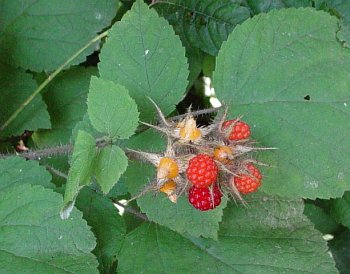
|
Wineberry as it grows in the field. The plant has more vitality in full sun, but also spreads in light shade. Wineberry grows to about shoulder height.
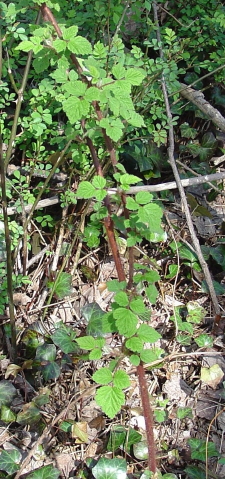
|
|
Wineberries are the only plants in Sligo with fuzzy red stems. Between the fuzz are short thorns.
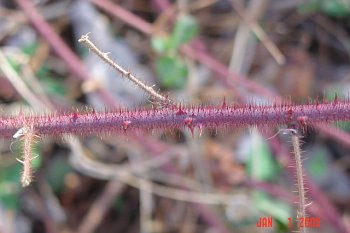
|
Roller coaster stems, backlit by the sun.
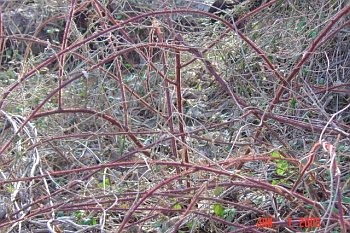
|
|
The stem may be green early in the season, but it will become red.
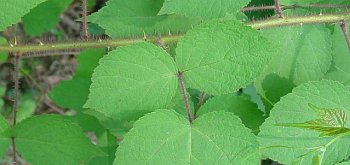
|
When a growing cane stretches enough to touch wet ground, it roots and starts a new plant. Wineberry canes die after the second year, leaving a dead stalk.
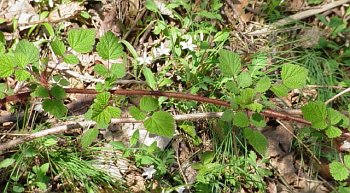
|
Look Alikes |
|
|
Blackberry. Blackberry stems are ridged along the length of the stem and thorns are rather far apart. Stems are dark red in winter. Despite these obvious differences, it is easy to cut an unexpected cane. Blackberry is a native plant which, like wineberry, belongs to the rose family.
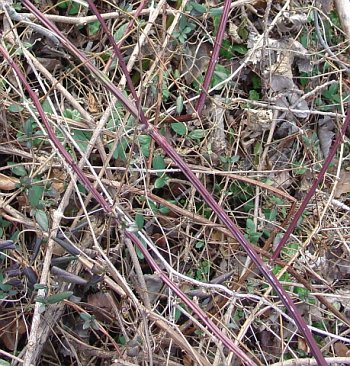
|
Blackberry flowers. The leaves are toothed and compound. On the left is gill-over-the-ground, an increasingly frequent European plant in sun and light shade.

|
Technique |
|
|
Wineberries are textbook examples of plants that spread by canes. Some plants have to be pulled three times!
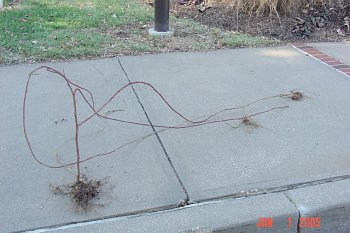
|
Wineberry that is removed in fall and in April-May may grown back. Arrows point to broken roots, whose fragments left in soil may grow into a new plant. Count on removing some wineberry plants at least twice.
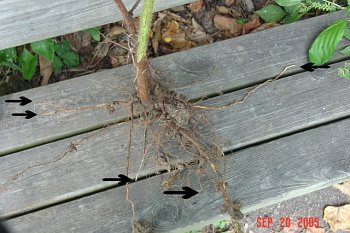
|
|
Even on January 1 this plant was full of life.

|
The undersides of wineberry leaves are whitish, and show up in a wind.
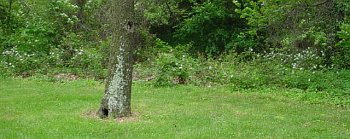
|